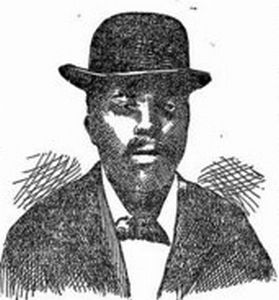The Robert Charles Riots began when whites in New Orleans, Louisiana became infuriated after Robert Charles, an African-American, shot several white police officers on July 23, 1900. A manhunt for Charles began after he fled after an altercation with New Orleans police officers. The race riot lasted over four days and claimed twenty-eight casualties, including Charles.
Robert Charles came to New Orleans from Mississippi and was a self-educated, articulate activist. He believed in self-defense for the African-American community and encouraged African-Americans in the United States to move to Liberia to escape racial discrimination.
On the night of July 23, 1900, three white police officers, Sergeant Jules C. Aucion, Joseph D. Cantrelle, and August T. Mora, found Charles and his roommate, Leonard Pierce, sitting on a porch in a predominantly white neighborhood. After some police harassment, Charles and Mora drew their guns and exchanged shots. Although neither was killed, Charles fled to his residence for refuge. Later in the evening, the police interrogated Pierce to determine the location of Charles’ home. When the policemen arrived at his house, Charles fired his rifle in their direction, killing two officers, including the chief, Captain Day. While the rest of the officers sought cover, Charles fled the scene, leading to a police manhunt.
The next day, a crowd of white New Orleans residents gathered at the location where the policemen were killed and called for the lynching of Charles. Numerous events of lawlessness and civil unrest as mobs of whites roamed the city to terrorize the city’s African-American community occurred over the next three days. On July 25, three African-Americans were killed, eleven others were hospitalized and over fifty were injured. Exacerbating the rioting were local newspapers’ reports that African-Americans were to blame for the unrest. Some African-Americans provided assistance to Charles while others were sympathetic because of the growing voting and civil rights restrictions in the city long known for its racial tolerance.
On July 27, the police and white vigilantes surrounded another house where Charles had taken refuge. An shootout occurred throughout the day between the men outside and Charles, who returned the fire. The police then decided to set the building on fire. As Charles attempted to escape the smoke-filled building, Charles Noiret—a Tulane University medical student who was assisting the police—shot and killed Charles. In anger, the mob of bystanders continued to beat Charles and fire their guns at his body.
By week’s end, Charles had shot a total of twenty-seven whites, killing seven, including four police officers. The rioting ended when New Orleans Mayor Paul Capdevielle deputized 1,500 special police and asked for assistance from the state militia.

